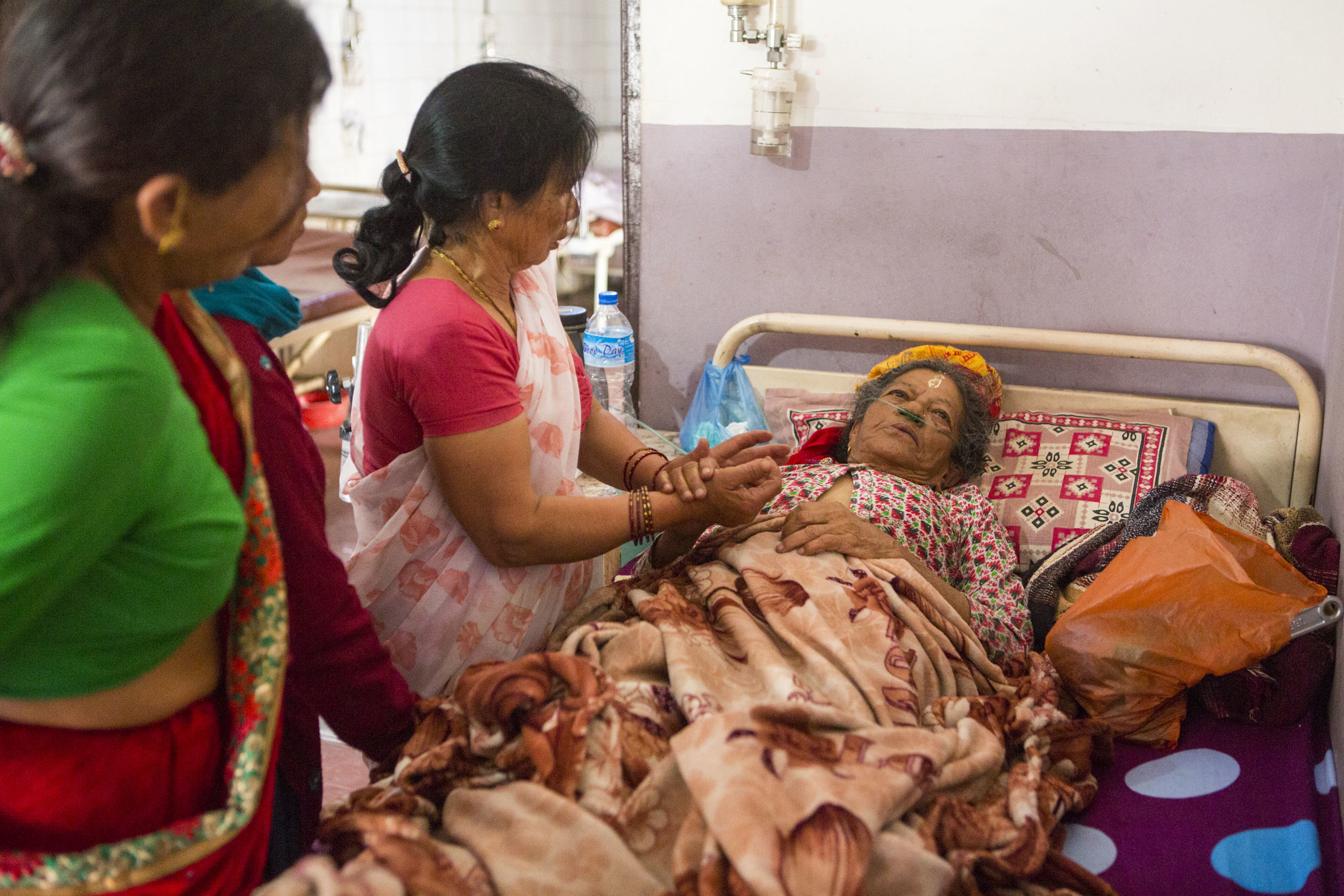
Family members stand by Suvandra Parajule's side as she lay dying at Pashupati's hospice care on May 15, 2016, in Kathmandu, Nepal. The family brought Parajule there to start the traditional cremation process immediately after her death.
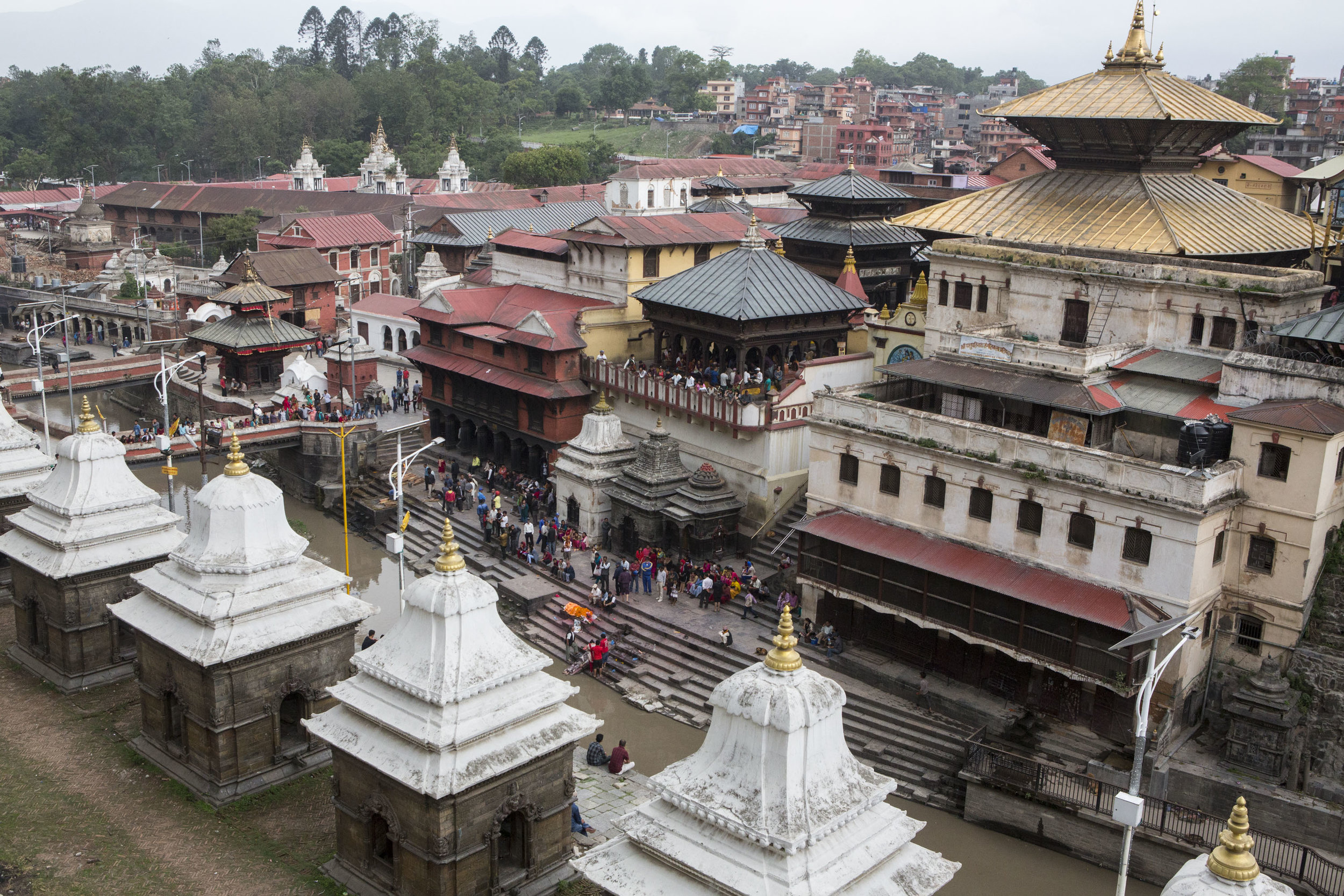
Pashupati complex is built on the banks of the Bagmati River, with its existence dating back to the fifth century. The complex is a place where Hindus and Buddhists come to pray, worship, as well as cremate loved ones. The main temple is home to the national deity, Pashupatinath, and is the source of many legends.

Men unload a body from an ambulance at Pashupati in order to begin its cleansing on the river bank.
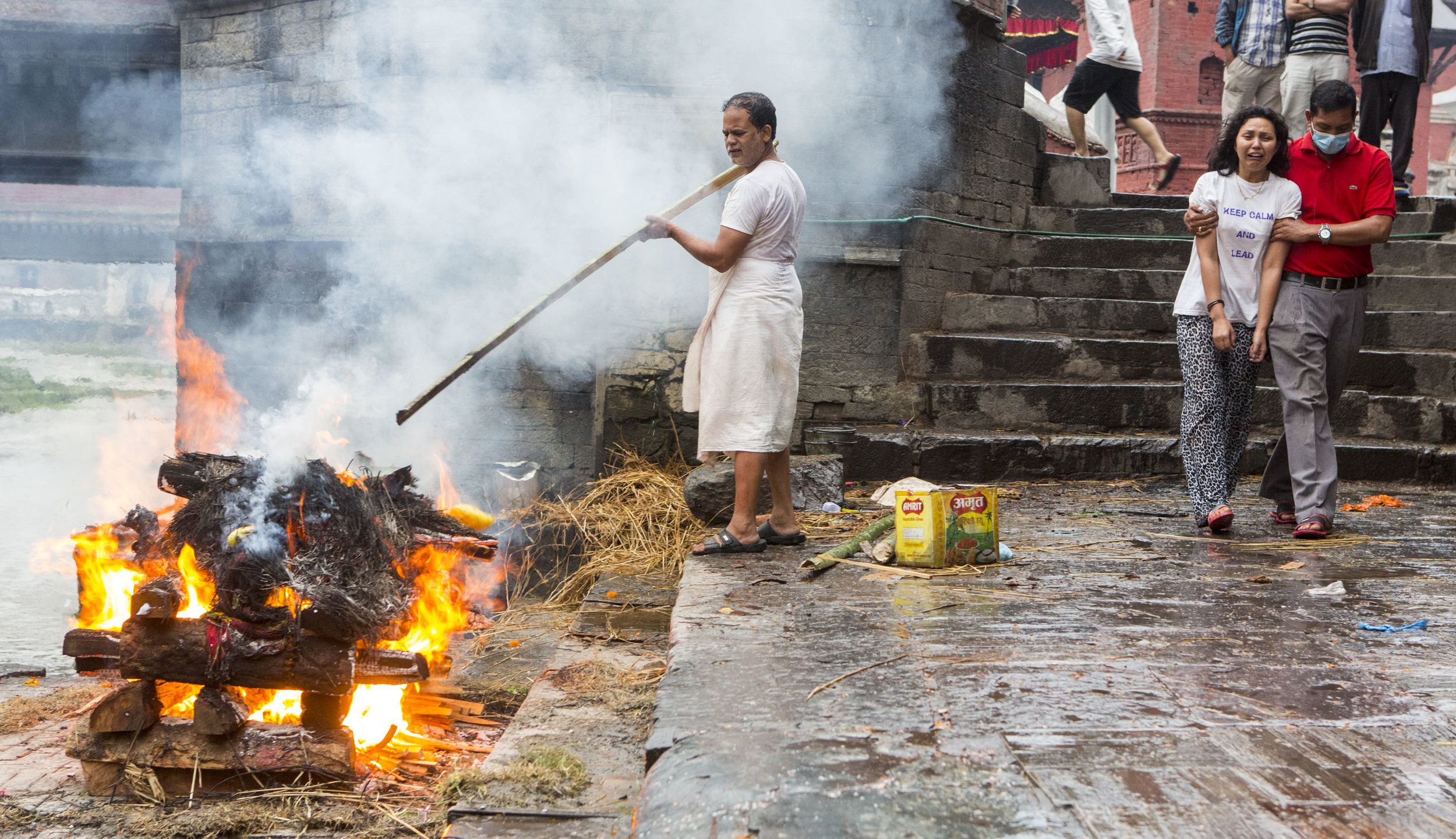
An undertaker cremates a body as family members pass by on May 24, 2016, at Pashupati in Kathmandu, Nepal.

Family members of the deceased grieve during a cremation ceremony on May 18, 2016, at Pashupati in Kathmandu, Nepal. Women are generally supposed to keep back during the four hour cremation.

Hindu priests hold their nightly worship ceremony at Pashupati. Pashupati is home to the oldest temple in Nepal and is considered one of the most sacred places in Hinduism.

An electric crematorium was opened on the Pashupati grounds in 2016 causing controversy among Hindus. The electric crematorium is more cheaper and more efficient, but is said to be breaking tradition.

The face of a deceased person is illuminated by flashlight at a night ceremony on May 23, 2016, in Kathmandu, Nepal. Incense smoke is used to guide the spirit out and as an offering to the deities.
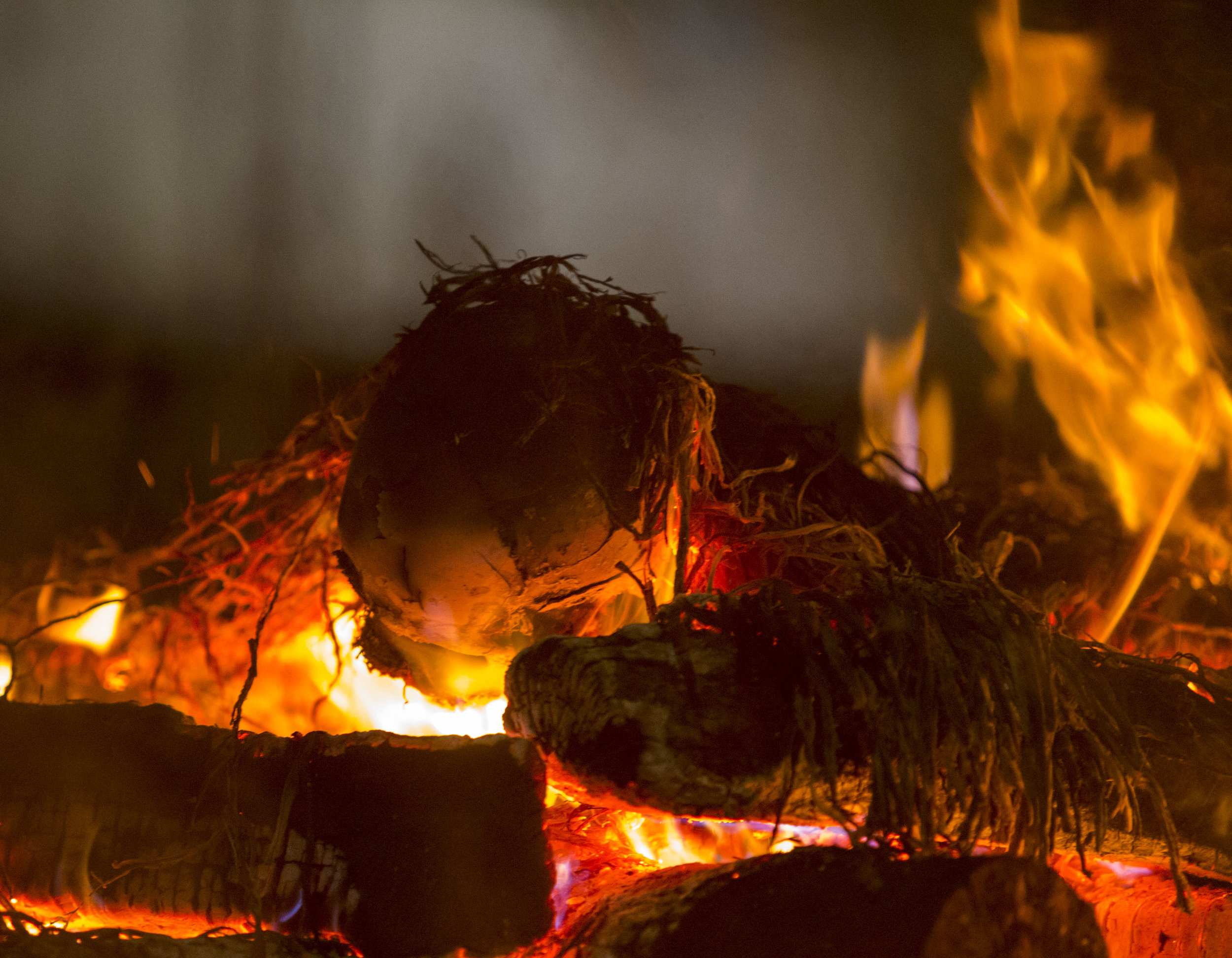
A skull burns during a cremation at Pashupati on May 23, 2016, in Kathmandu, Nepal.
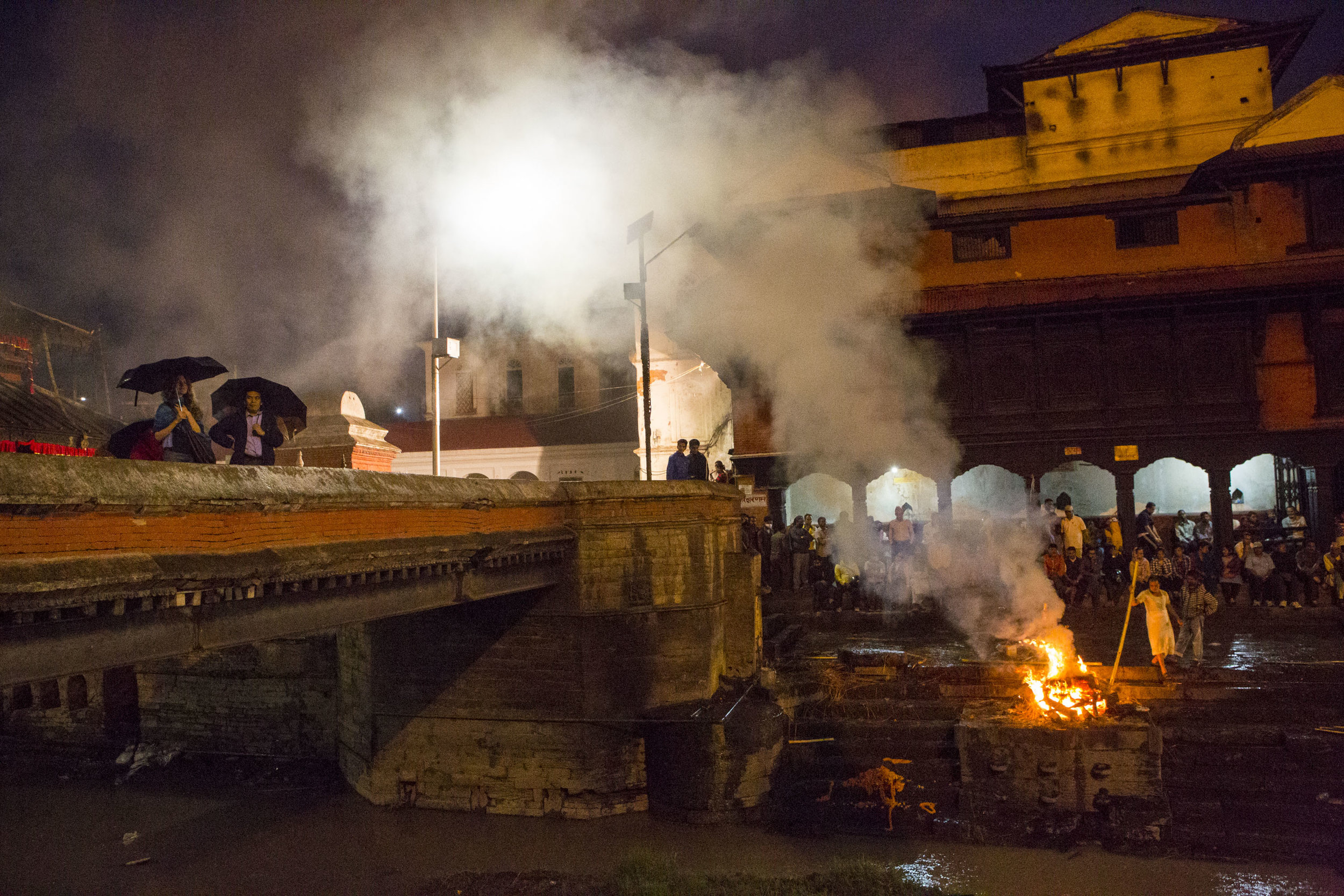
Smoke billows from the ghat where the traditional cremations are performed. Cremations continue through the night until the ashes are released into the Bagmati River where the spirit will flow into reincarnation.










Family members stand by Suvandra Parajule's side as she lay dying at Pashupati's hospice care on May 15, 2016, in Kathmandu, Nepal. The family brought Parajule there to start the traditional cremation process immediately after her death.
Pashupati complex is built on the banks of the Bagmati River, with its existence dating back to the fifth century. The complex is a place where Hindus and Buddhists come to pray, worship, as well as cremate loved ones. The main temple is home to the national deity, Pashupatinath, and is the source of many legends.
Men unload a body from an ambulance at Pashupati in order to begin its cleansing on the river bank.
An undertaker cremates a body as family members pass by on May 24, 2016, at Pashupati in Kathmandu, Nepal.
Family members of the deceased grieve during a cremation ceremony on May 18, 2016, at Pashupati in Kathmandu, Nepal. Women are generally supposed to keep back during the four hour cremation.
Hindu priests hold their nightly worship ceremony at Pashupati. Pashupati is home to the oldest temple in Nepal and is considered one of the most sacred places in Hinduism.
An electric crematorium was opened on the Pashupati grounds in 2016 causing controversy among Hindus. The electric crematorium is more cheaper and more efficient, but is said to be breaking tradition.
The face of a deceased person is illuminated by flashlight at a night ceremony on May 23, 2016, in Kathmandu, Nepal. Incense smoke is used to guide the spirit out and as an offering to the deities.
A skull burns during a cremation at Pashupati on May 23, 2016, in Kathmandu, Nepal.
Smoke billows from the ghat where the traditional cremations are performed. Cremations continue through the night until the ashes are released into the Bagmati River where the spirit will flow into reincarnation.